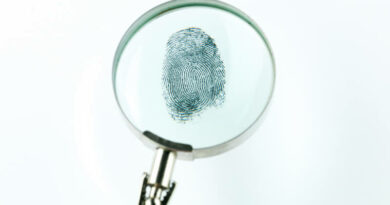Patient Identification: Why It’s Important and How Best Ways to Implement It
In recent years, we have witnessed spectacular technological advancements that have forever transformed various industries. And the healthcare industry is no exception. It has felt the change both in terms of service delivery and patient experience.
Specifically, the US healthcare system has started integrating innovative tools and technology to ensure more seamless governance and practice. This trend is readily apparent in terms of patient identification. Here, the new technology helps streamline the way patients are identified and connected to personal information and medical history. This makes it easier to provide the intended clinical intervention and minimize medical malpractices.
Now, this is a huge step in the right direction, especially if we consider that a whopping 250,000 deaths result from medical errors every year.
With that in mind, let’s dive in and find out more about patient identification.
The Benefits of Patient Identification
The information flow in healthcare is perhaps greater than in any industry. So, privacy and safety should be of the utmost importance. To this end, it’s imperative that the healthcare industry modernize the way it collects and stores information. This is directly linked to the proper identification of patients, resulting in a range of benefits, such as:
- Minimizing medication and diagnosis errors
- Avoiding medication administration errors
- Reducing the number of duplicate medical records
- Diminishing health insurance fraud and medical identity theft
- Improving medical data accuracy
- Ensuring effective medical treatment
The current Covid-19 pandemic is also a great eye-opener to the importance of patient identification. Healthcare professionals seek to limit the spread of contagious diseases and maintain a high level of hygiene in hospitals. What is more, the medical identity threat is still going strong during the pandemic, which requires stringent measures. This can be done by implementing a modern patient identity verification process.
Here’s how:
Biometric patient identification systems, for example, can identify a patient using biometrics characteristics and facilitate record maintenance. Compared to the manual method, this system is more efficient and reliable.
The Best Practices for Patient Identification
Ensuring Two-Factor Authentication
While two-factor identification is the recommended industry standard, fortifying these factors with additional information like home address and medical identification number could be more effective in avoiding misidentification. It is highly discouraged for healthcare staff to use room numbers as patient identifiers.
As much as possible, one should use active communication. It is always a good idea to ask the patient to state their full name and date of birth, and any additional factor that could confirm their identity. When verifying information, it is best to avoid asking affirmative questions that only require only “yes” or “no” answers.
Presenting Proof of Identity During the Process
For adult patients, it’s common practice to provide proof of identification, such as photo ID or driver’s license. Even better, it is highly advisable for healthcare facilities to modernize their identification system. Using automated tools for patient identification like barcoding, biometrics, and radio-frequency identification can reduce the chance of errors. It’s also a great way to gather, store, and retrieve patient information when needed.
Taking Photos for Medical Records
Medical identity theft and healthcare fraud are just some of the serious problems that the industry faces. For healthcare organizations that wish to thwart these issues, taking photographs of patients for medical records is a good start. Aside from deterring identity fraud, this step can also aid healthcare professionals in administering treatment to the right patient. When verifying patient information in the future, they will be able to easily match the patient with the photos in their database.
Establishing a Standard Protocol
In any industry, a standard protocol often serves as the foundation of every implemented process. That’s particularly the case in the healthcare system when dealing with patient identification. The standard protocol can include the steps that one should take when verifying patient identity and information.
Some of the things to consider are:
What should you do in situations where patients lack identification? What is the best way to deal with the identity of patients who share the same name? What if the patient is confused or comatose?
These protocols will serve as a guide to healthcare staff in their every day dealing with patients. Moreover, it is a good idea to teach these protocols to everyone in the institution through orientations and training sessions. Finally, staff should be able to refresh and update their knowledge whenever new guidelines come up.
Wrapping it Up
Preventing errors in patient identification remains an important challenge for the healthcare system. After all, misidentification can greatly impact institutions in both moral and financial terms, not to mention the serious concerns to the patients’ safety and wellbeing.
The bottom line is:
Hospitals and medical centers can do much to refine the patient identification process, such as considering the integration of automated systems like biometrics. In addition to making the staff’s jobs easier, it can also help them avoid errors that could possibly lead to the gravest of consequences.











